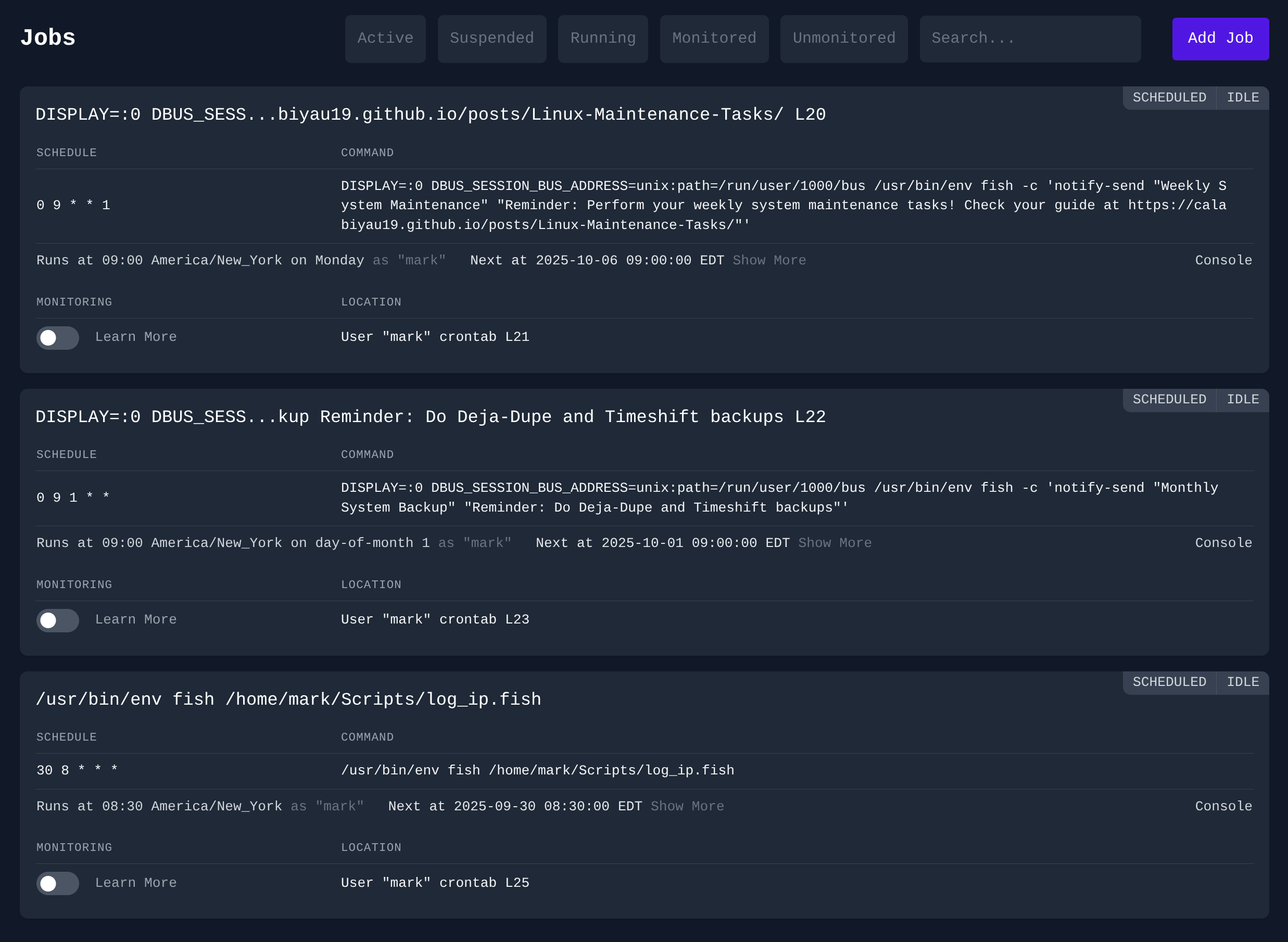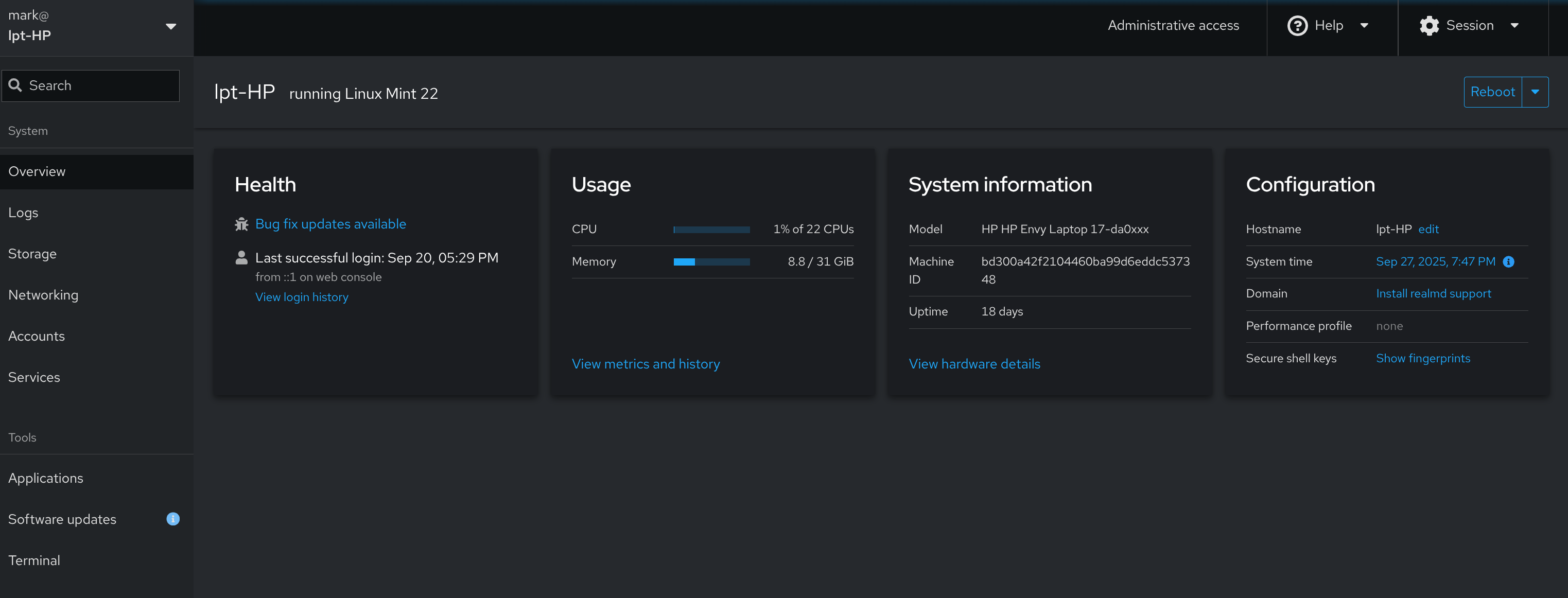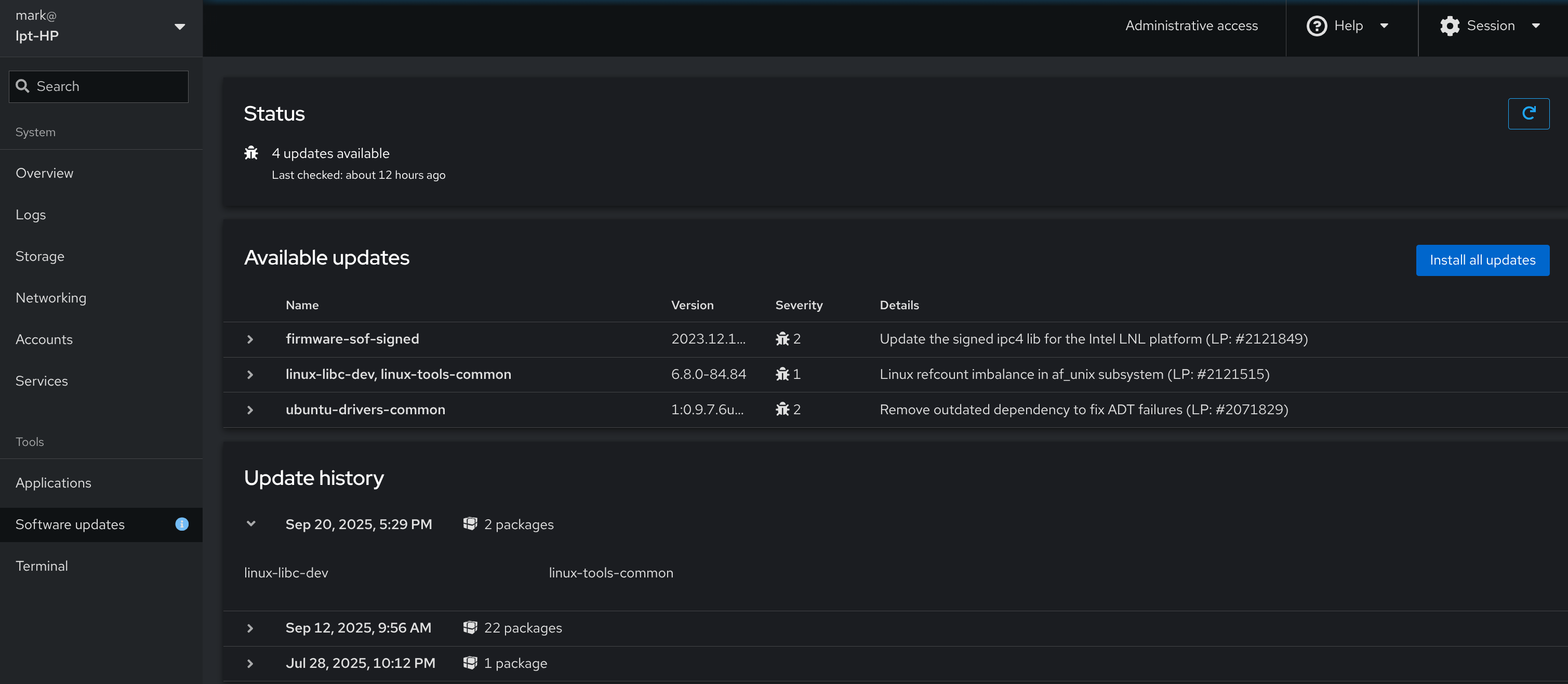Linux: Crontab Guru and Cockpit
Crontab Guru (Cronitor Dashboard) & Cockpit are GUI fronts for running cron jobs and all things system administration related on Linux Mint.
Linux: Crontab Guru and Cockpit
This document explains how Crontab Guru (Cronitor Dashboard) and Cockpit work on Linux Mint, how they are run, and provides example workflows for daily use.
Crontab Guru (Cronitor Dashboard)
What it is
- A local web dashboard for managing and monitoring cron jobs
- Accessible at:
http://localhost:9022/ - Powered by the Cronitor CLI (
/usr/bin/cronitor) - Configured via
/etc/cronitor/cronitor.json
Click for full window view
How it runs
Installation:
1
curl https://crontab.guru/install | sh
Managed as a systemd service:
1
2
3
4
sudo systemctl start crontab-guru-dashboard
sudo systemctl stop crontab-guru-dashboard
sudo systemctl restart crontab-guru-dashboard
sudo systemctl status crontab-guru-dashboard
Auto-start on boot:
1
sudo systemctl enable crontab-guru-dashboard
Configuration
The configuration file /etc/cronitor/cronitor.json contains:
CRONITOR_DASH_USER/CRONITOR_DASH_PASS→ dashboard login credentialsCRONITOR_USERS→ which system users’ crontabs are monitored (e.g.,root, mark)- Other fields allow integration with Cronitor Cloud, logging, and hostname overrides
What you can do with it
- View cron jobs for the configured users
- Track execution times and job history
- Verify new cron entries are picked up
- Use it alongside crontab guru (web tool) for building cron expressions
Cockpit
What it is
- A web-based system administration dashboard
- Accessible at:
https://localhost:9090/ - Provides a friendly GUI for managing services, logs, and system health
What you can do with it
- System monitoring: real-time CPU, memory, disk, and network graphs
- Service management: start/stop/restart services (e.g.,
crontab-guru-dashboard) - Logs: browse and filter system logs without
journalctl - Storage: view partitions, usage, and disks
- Users: manage accounts, sessions, and passwords
- Software updates: install updates via GUI (with
cockpit-packagekit)
Good ways to use Cockpit
- Quick health check after boot
- Service control without terminal commands
- Searching through system logs when debugging
- Remote system management (optional, if secured)
Example Workflows
1. Add a new cron job and verify in Crontab Guru
1
crontab -e
Example job:
1
0 3 * * * /home/mark/scripts/backup.sh
- Save and exit
- Open
http://localhost:9022/→ log in → verify the job appears under usermark
2. Restart a failed service in Cockpit
- Open
https://localhost:9090/→ log in - Go to Services
- Search for
crontab-guru-dashboard - If it’s failed or inactive → click Restart
3. Check system health before troubleshooting
- Open Cockpit → Overview page
- Check CPU/Memory/Disk graphs for spikes
- Open Logs → filter by “Error” or “Warning”
4. Manage Crontab Guru via systemd
Restart dashboard:
1
sudo systemctl restart crontab-guru-dashboard
Check status:
1
systemctl status crontab-guru-dashboard --no-pager
Enable auto-start on boot:
1
sudo systemctl enable crontab-guru-dashboard
Summary
- Crontab Guru (Cronitor Dashboard) gives visibility into cron jobs and schedules
- Cockpit provides a full system management dashboard (services, logs, performance, storage)
- Together, they let you manage scheduled jobs and system health from easy-to-use interfaces
Additional Resources
- Crontab Guru Website - Build cron expressions
- Cockpit Documentation
- Systemd Service Management
This post is licensed under CC BY 4.0 by the author.



